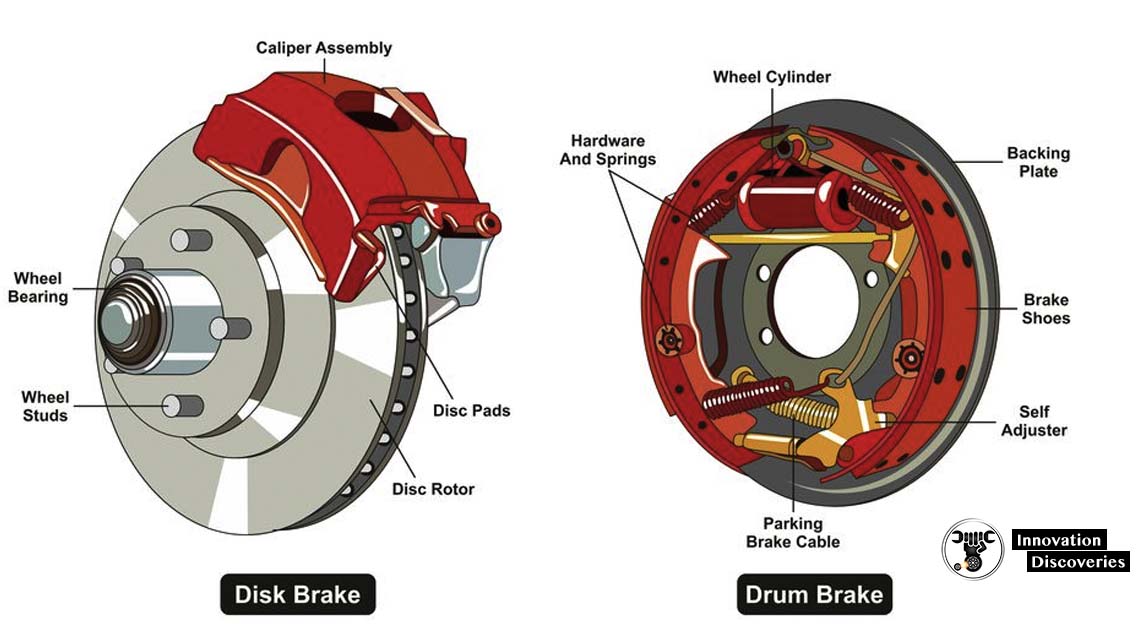The Power of Disc Brakes: A Comprehensive Guide

Discover the ultimate stopping power with disc brakes. From their history to how they work, this guide covers everything you need to know about these essential components of modern vehicles.
The Evolution of Braking Systems
Braking systems have come a long way since the early days of automobiles. Initially, cars relied on mechanical braking systems, where the driver manually applied pressure to the brake pedal. This system used friction to slow down the vehicle and was prone to wear and overheating. As technology advanced, hydraulic braking systems were introduced, which used fluid pressure to transmit force from the brake pedal to the brakes. This improved braking efficiency and reliability.
In recent years, electronic braking systems (EBS) have become more prevalent. EBS utilize sensors and computer-controlled components to optimize braking performance. They can adapt to different driving conditions and help prevent wheel lock-up or skidding. The evolution of braking systems has greatly contributed to the safety and control of modern vehicles.
Understanding Disc Brakes
Disc brakes are a type of braking system commonly used in modern cars. They consist of a rotor, caliper, and brake pads. When the driver applies the brakes, hydraulic pressure forces the brake pads against the rotor, generating friction and slowing down the vehicle.
One of the key components of disc brakes is the rotor, which is a flat, circular metal disc attached to the wheel. When the brakes are applied, the caliper squeezes the brake pads against the rotor, creating friction. This friction converts the kinetic energy of the moving vehicle into heat energy, which is dissipated into the surrounding air.
Disc brakes offer several advantages over other types of braking systems. They provide excellent stopping power, allowing for shorter braking distances and faster deceleration. They are also less prone to fade, which is a decrease in braking performance due to overheating. Additionally, disc brakes are more resistant to water and debris, ensuring consistent braking even in adverse conditions.
Advantages of Disc Brakes
Disc brakes offer numerous advantages that make them a popular choice in modern vehicles. One of their main advantages is their superior stopping power. The design of disc brakes allows for efficient heat dissipation, preventing brake fade and ensuring consistent performance.
Another advantage of disc brakes is their quick responsiveness. As soon as the driver applies the brakes, the hydraulic pressure forces the brake pads against the rotor, resulting in immediate deceleration. This quick response time can be crucial in emergency situations.
Disc brakes are also easier to maintain compared to other braking systems. The brake pads can be easily replaced when worn out, and the rotors can be resurfaced or replaced if necessary. This makes disc brakes a cost-effective option in the long run.
Furthermore, disc brakes are less affected by wet or damp conditions. The open design of the rotor allows water to be quickly dispersed, preventing the buildup of moisture on the braking surface. This improves braking performance and reduces the risk of skidding or loss of control.
Maintenance and Care of Disc Brakes
Proper maintenance and care are essential to ensure the optimal performance and longevity of disc brakes. Regular inspection of the brake pads and rotors is important to identify any signs of wear or damage. If the brake pads are worn out or the rotors are warped or heavily grooved, they should be replaced.
It is also important to keep the brake system clean and free from debris. Accumulated dirt or brake dust can affect the braking performance and lead to premature wear. Cleaning the brakes with a mild detergent and a soft brush can help remove any buildup.
Additionally, maintaining the proper level of brake fluid is crucial for the hydraulic system to function correctly. Brake fluid should be checked regularly and replaced according to the manufacturer's recommendations.
Regular brake system inspections by a qualified technician are highly recommended to ensure the safety and reliability of the disc brakes.
Future Innovations in Disc Brake Technology
Disc brake technology continues to evolve, with ongoing research and development focused on improving performance, efficiency, and safety. One area of innovation is the use of advanced materials for the rotor and brake pads, such as carbon-ceramic composites. These materials offer higher heat resistance and better durability, resulting in improved braking performance and longer lifespan.
Another area of development is the integration of electronic systems into disc brakes. This includes features like brake-by-wire technology, where the brake pedal is connected to sensors and actuators electronically instead of through a mechanical linkage. These electronic systems can provide enhanced control and allow for more precise braking.
In addition, advancements in regenerative braking technology are being explored. Regenerative braking systems capture and convert the kinetic energy of the vehicle into electrical energy, which can be stored in a battery or used to power other vehicle systems. This technology aims to improve energy efficiency and reduce reliance on traditional braking systems.
As automotive technology continues to advance, we can expect further innovations in disc brake technology, ultimately enhancing the safety, performance, and sustainability of vehicles.

 Loading..
Loading..